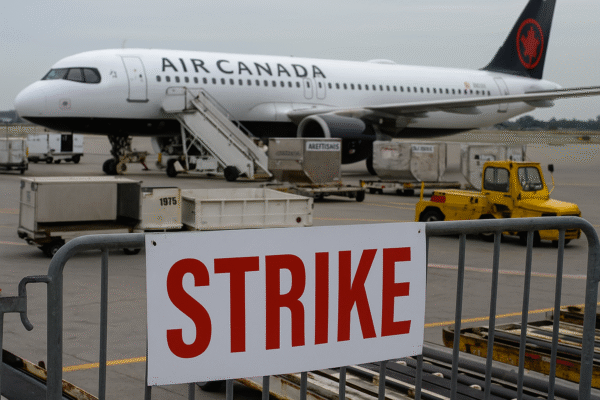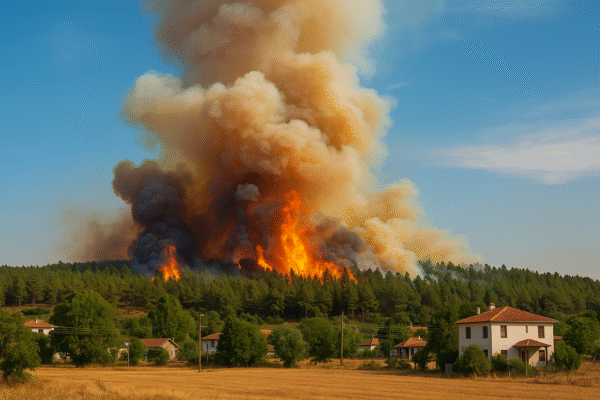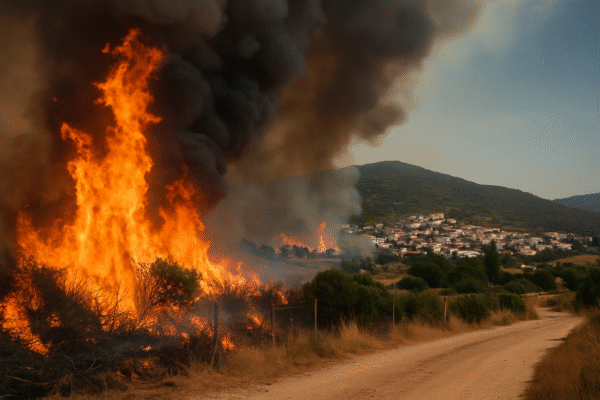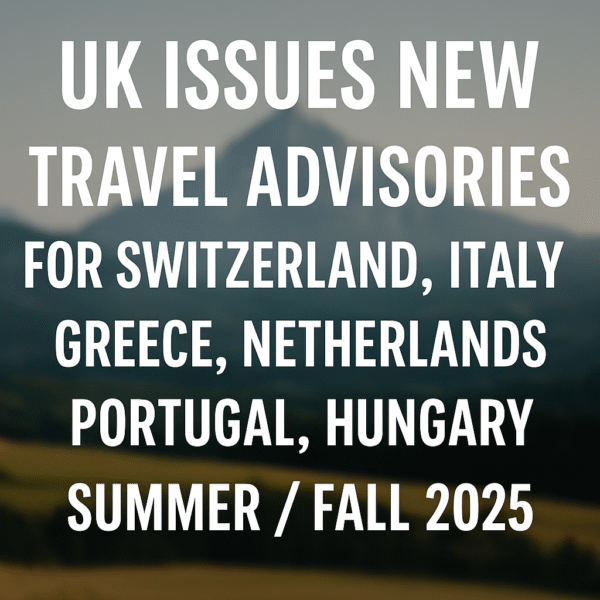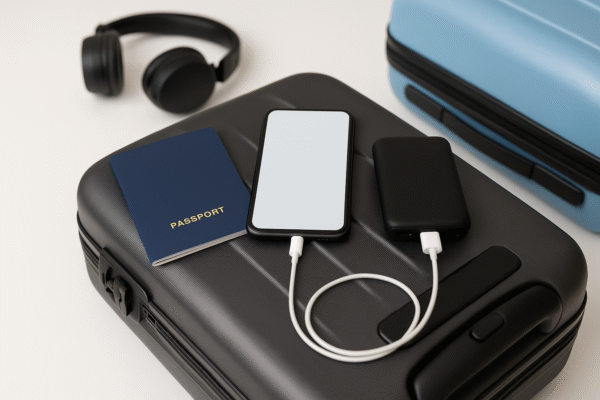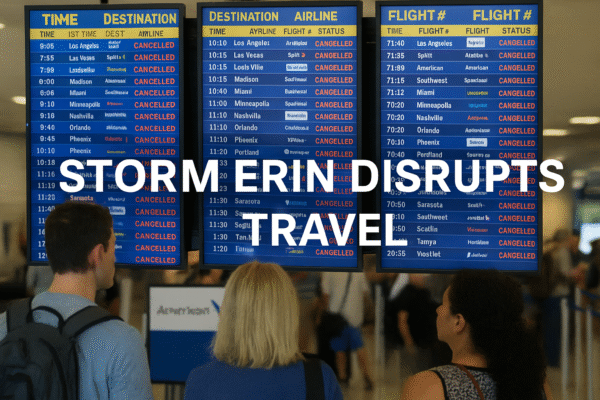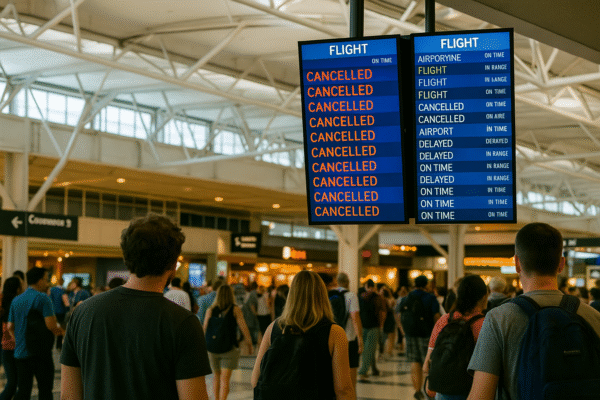Hurricane Erin, once a menacing Category 5 storm, was downgraded to Category 3 on its northward track but still managed to disrupt air travel across the U.S., particularly in key hubs like Chicago, Denver, Los Angeles, and New York. Over 500 flight cancellations and nearly 1,800 delays were reported nationwide, stranding thousands of passengers and sending airlines scrambling to reroute traffic and calm growing travel chaos.
At the heart of the disruption was Chicago’s O’Hare International Airport (ORD), which experienced the most significant operational breakdown, followed by ripple effects at Denver International (DEN), Los Angeles International (LAX), and New York’s LaGuardia Airport (LGA). Even though Erin’s core remained offshore, its storm bands brought high winds and turbulence, forcing airlines to ground aircraft, delay arrivals, and reassign scattered crews.
O’Hare International Airport: Epicenter of Air Travel Turmoil
O’Hare logged a staggering 252 cancellations and 299 delays within 24 hours, as per data from FlightAware. Airlines like SkyWest (75 cancellations), United (57), and American Airlines (21) were particularly impacted. Air Canada suspended 77% of its operations at the airport.
The domino effect of Erin’s impact was felt across terminals as passengers scrambled for alternative flights. In-terminal announcements echoed with updates of changing gates, extended delays, and full rebooking lines. Despite clear skies over Chicago, the wind-related turbulence at higher altitudes and operational bottlenecks forced airlines to proceed with caution.
Denver and Los Angeles Airports Battle the Storm’s Aftershock
Denver International Airport reported 15 cancellations and 66 delays. Air Canada bore the brunt, cancelling 83% of its flights. United and American also made precautionary adjustments. Despite no direct weather disturbance, the storm’s broader air traffic ripple severely curtailed schedules.
In Los Angeles, 19 flights were cancelled and 86 delayed. Air Canada led cancellations with 14 flights, while domestic carriers like American and United suspended two each. International airlines such as El Al and Cathay Pacific also faced itinerary issues, highlighting the global nature of the disruption.
LaGuardia in New York: Packed Terminals and Mounting Delays
LaGuardia saw 19 cancellations and 100 delays, as East Coast airports prepared for possible storm surges and erratic flight paths. Air Canada once again was the hardest hit, cancelling 75% of its service from the airport.
Delta and Spirit Airlines experienced notable delays, with passengers reporting hours-long queues and minimal flight options. Some travelers opted to transfer to nearby JFK or Newark, hoping to escape the mounting congestion.
Hurricane Erin: Overview and Current Track
According to the National Hurricane Center (NHC), Erin was located about 200 miles north-northwest of San Juan, Puerto Rico, with sustained winds of 125 mph. While no U.S. mainland landfall is anticipated, the storm continues to fuel dangerous rip currents and hazardous conditions along the East Coast, particularly from the Carolinas to New Jersey.
Projected to pass east of the Turks and Caicos and the Bahamas between August 17 and 18, Erin’s massive wind field and pressure systems are likely to keep U.S. airports on high alert throughout the week.
Caribbean Power Crisis: Thousands Without Electricity
The U.S. Virgin Islands are among the hardest hit in terms of infrastructure. Nearly 82% of St. Thomas’ residents lost power, with outages also reported in St. John and St. Croix. The Virgin Islands Water and Power Authority is working to restore services, but full recovery is expected to take days.
These conditions have forced tourists to reconsider travel plans across the Caribbean, with some airlines suspending flights into and out of the region until conditions stabilize.
Airlines Offer Waivers Amid Widespread Travel Chaos
Major carriers including American Airlines, United, Delta, and Air Canada have announced travel waivers, allowing passengers to rebook without change fees. However, availability remains limited as aircraft and flight crews are displaced across the country.
At Chicago O’Hare, passengers described lines stretching beyond security zones. In Denver and Los Angeles, terminals bustled with confused travelers and overstretched customer service agents. In New York, some opted to rent cars or book long-haul trains.
A Cautionary Weekend Ahead for Travelers
Although downgraded, Erin’s presence looms large over the U.S. air traffic system. Weather forecasts warn of further complications along the Eastern Seaboard. Travelers are urged to check real-time updates through flight-tracking services like FlightAware and airline apps.
Airports in the Midwest and East Coast are expected to remain busy and potentially face new rounds of delays as the storm continues to influence airspace and infrastructure. The Federal Aviation Administration (FAA) has coordinated with airlines and air traffic control centers to manage airspace effectively during the crisis.
Conclusion: The Importance of Preparation in Weather-Driven Disruptions
Storm Erin has once again highlighted the fragility of air travel systems in the face of natural disasters. While the storm has weakened, its residual impact on the aviation network has stranded thousands and tested airline contingency plans.
As extreme weather events become more frequent, proactive planning, real-time communication, and flexible itineraries remain essential tools for modern travelers.
For more travel news like this, keep reading Global Travel Wire




